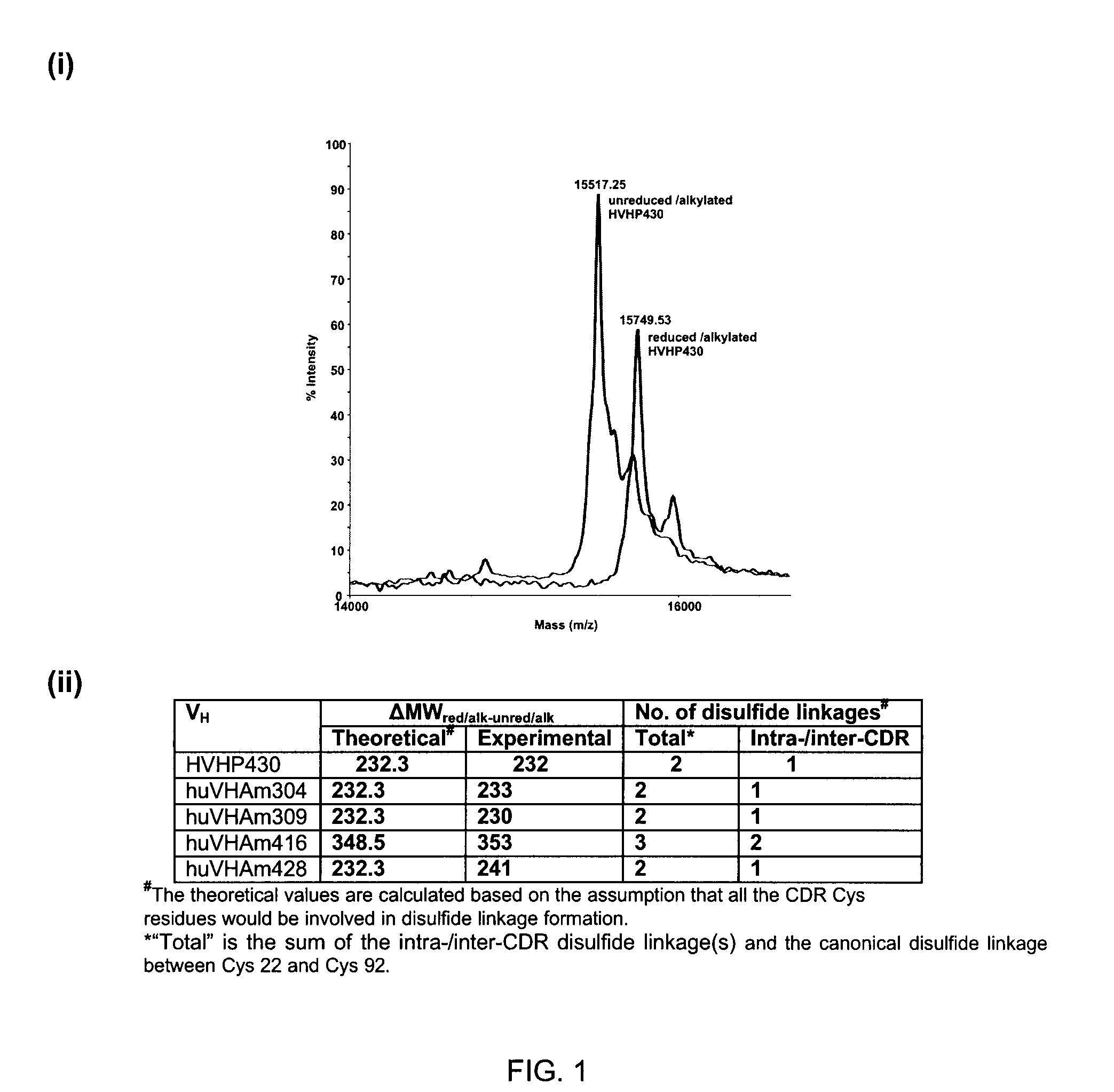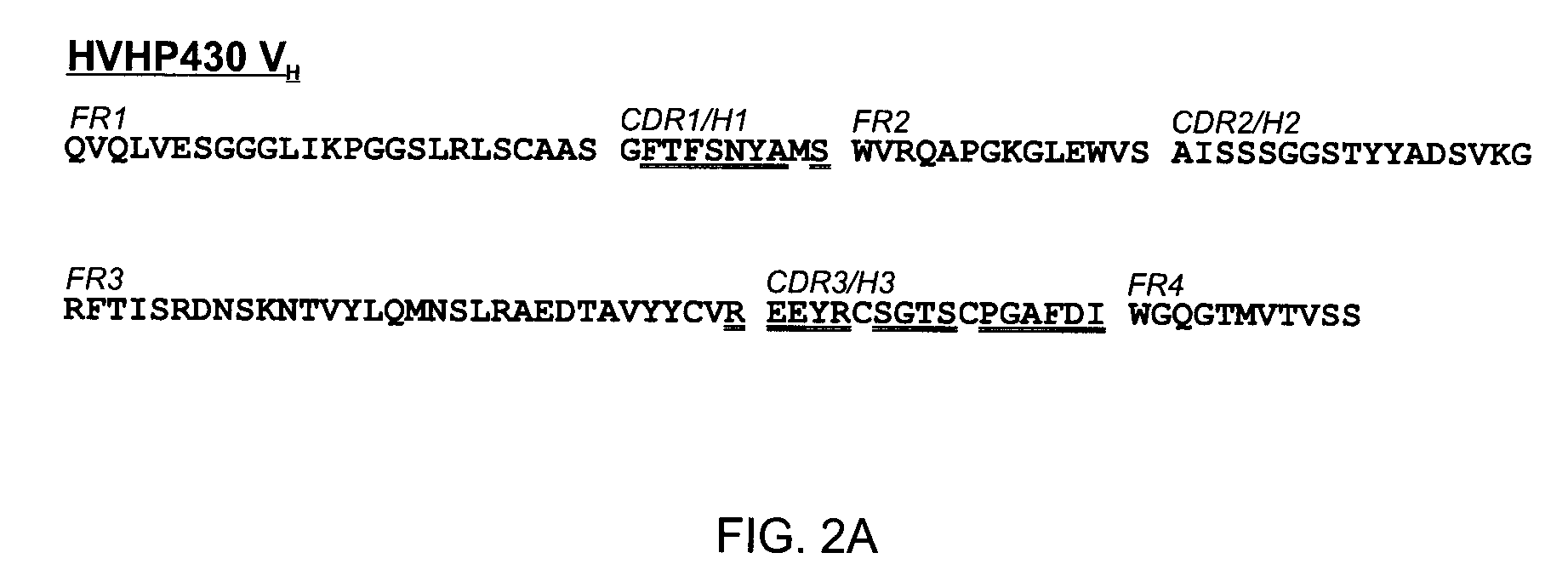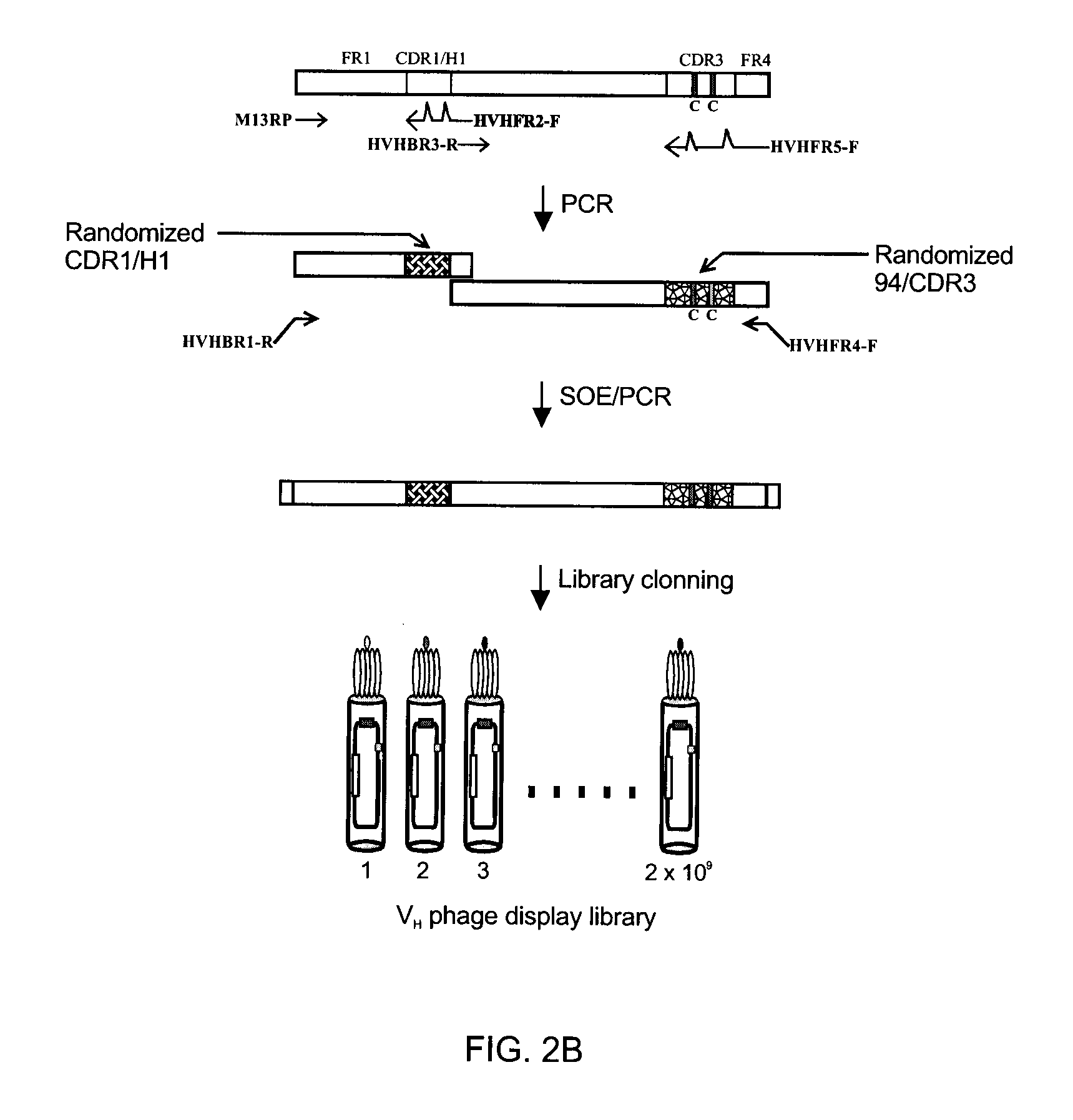Non-aggregating human vh domains
- Summary
- Abstract
- Description
- Claims
- Application Information
AI Technical Summary
Benefits of technology
Problems solved by technology
Method used
Image
Examples
example 1
HVHP430 VH Library Construction
[0139]A fully-synthetic, phagemid-based human VH phage display library was constructed.
[0140]In constructing the VH library on the HVHP430 scaffold (FIG. 2A, SEQ ID NO:1), the two CDR3 Cys were maintained to promote the formation of intra-CDR disulfide linkage and thus, to increase the frequency of enzyme-inhibiting VHs in the library. The remaining 14 CDR3 positions, position 94 as well as eight H1 / CDR1 positions were randomized (FIG. 2A). CDR2 was left untouched as it has been shown to be involved in protein A binding (Randen et al., 1993; Bond et al., 2003). Besides, CDR2-lacking VNARs (Stanfield et al., 2004) or camelid VHHs utilizing their CDR1 and CDR3 (Decanniere et al., 1999) or just CDR3 (Desmyter et al., 2001) for antigen recognition demonstrate nanomolar affinities. The library was constructed with a phagemid vector (FIG. 3) according to the scheme shown in FIG. 2B.
[0141]The human VH HVHP430 (To et al., 2005), which has two Cys residues in i...
example 2
Panning and Phage ELISA
A. Panning in a Monovalent Display Format
[0144]In the first panning attempt, the helper phage M13KO7 was used for super-infection, resulting in a monovalent display of VHs on the surface of the phage (O'Connell et al., 2002). The initial aim was to explore the feasibility of the library in yielding enzyme inhibitors. Four rounds of panning were performed against α-amylase, lysozyme and carbonic anhydrase, as described below.
[0145]A total of 50 μg antigen (lysozyme, α-amylase and carbonic anhydrase) in 100 μL PBS was used to coat Maxisorp™ wells (Nunc, Roskilde, Denmark) overnight at 4° C. The solutions were then removed and the wells were blocked by adding 200 μL of 3% BSA in PBS and incubating the wells for 2 h at 37° C. The blocking reagent was removed and 1012 library phage (input) was added to each well, and the wells were incubated for 2 h at 37° C. The supernatants were removed and wells were washed 7 times with 0.1% PBST (0.1% v / v Tween 20 in PBS). To e...
example 3
Analysis of Clones
[0159]Nine VHs, huVHAm302, huVHAm304, huVHAm309, huVHAm315, huVHAm316, huVHAm416, huVHAm427, huVHAm428 and huVHAm431, were identified for subcloning and further analysis. However, all except one (huVHAm431) had amber stop codon which would impede their expression even in an amber suppressing strain such as TG1 which was to be used as the expression host (in TG1 cells, the amber stop codon is read as an amino acid but mostly as a stop codon). Thus, the amber codons were replaced with a non-stop codon that would code for the same amino acid and re-express the resultant VHs.
[0160]However, in selecting the appropriate replacement codon, inconsistent information was found with regards to the nature of the amino acids being coded by the amber codon in E. coli TG1 cells. Some have reported Glu as the overwriting amino acids (Hoogenboom, H. R. et al., 1991), (Baek, H. et al., 2002) while others Gln (Soltes, G. et al., 2003) (Marcus, W. D. et al., 2006a). As an exact amino ...
PUM
| Property | Measurement | Unit |
|---|---|---|
| Composition | aaaaa | aaaaa |
| Acidity | aaaaa | aaaaa |
| Isoelectric point | aaaaa | aaaaa |
Abstract
Description
Claims
Application Information
 Login to View More
Login to View More - R&D
- Intellectual Property
- Life Sciences
- Materials
- Tech Scout
- Unparalleled Data Quality
- Higher Quality Content
- 60% Fewer Hallucinations
Browse by: Latest US Patents, China's latest patents, Technical Efficacy Thesaurus, Application Domain, Technology Topic, Popular Technical Reports.
© 2025 PatSnap. All rights reserved.Legal|Privacy policy|Modern Slavery Act Transparency Statement|Sitemap|About US| Contact US: help@patsnap.com



